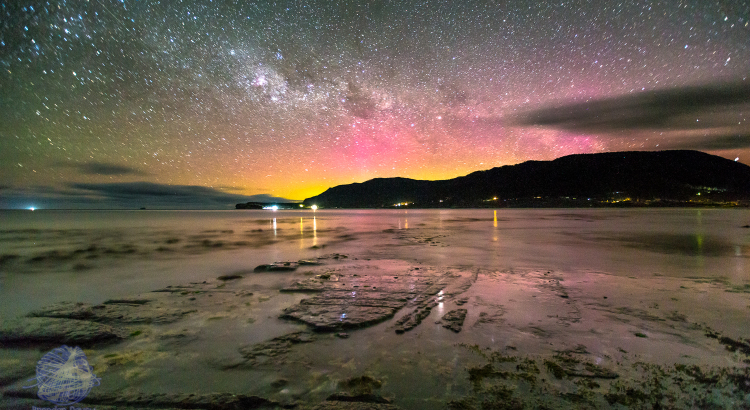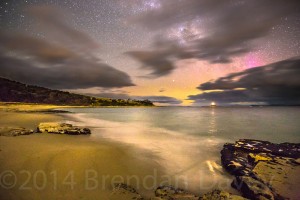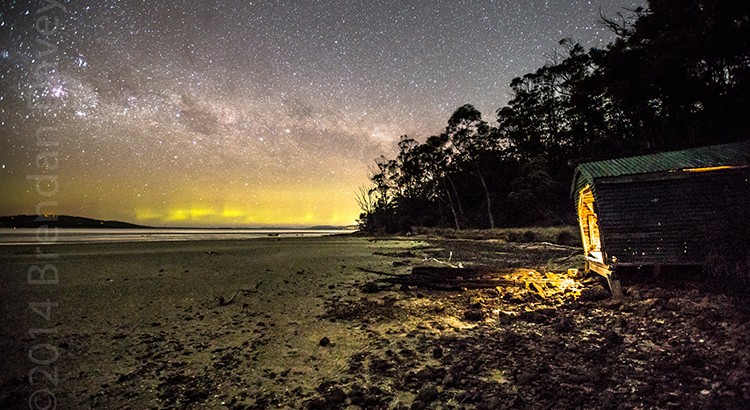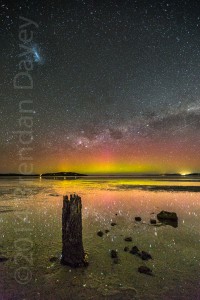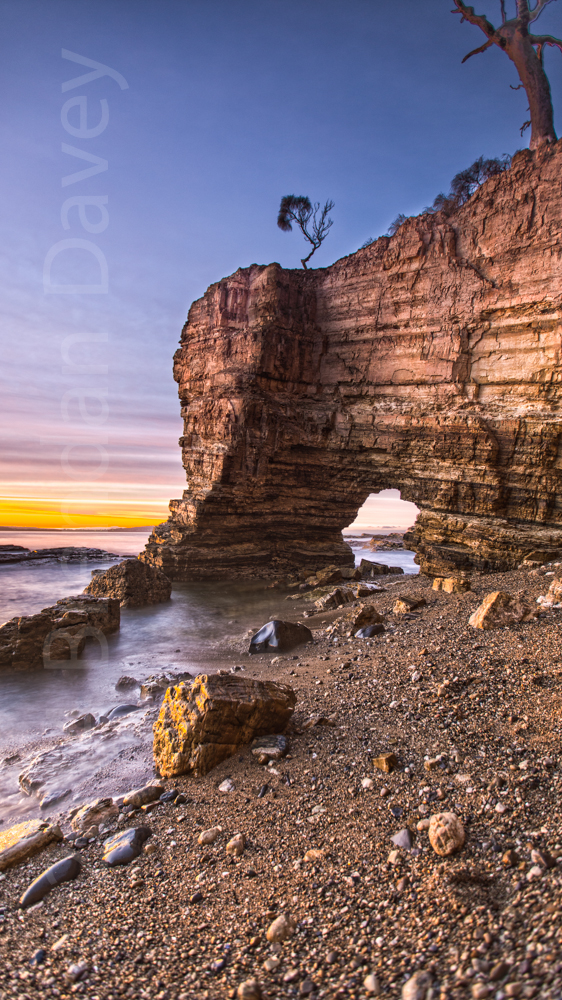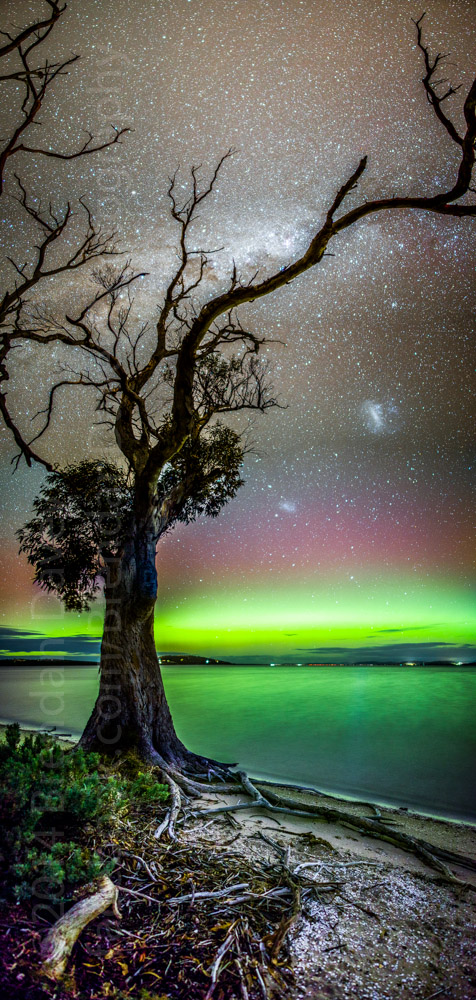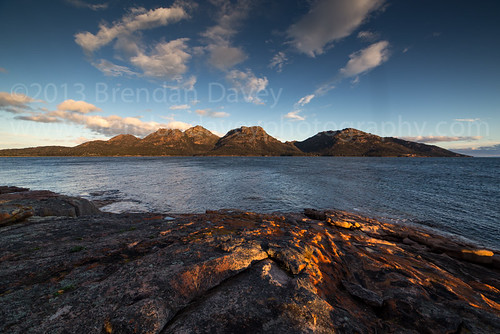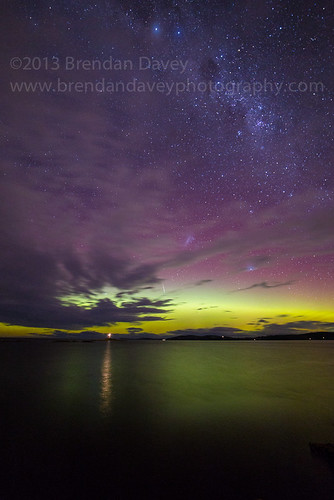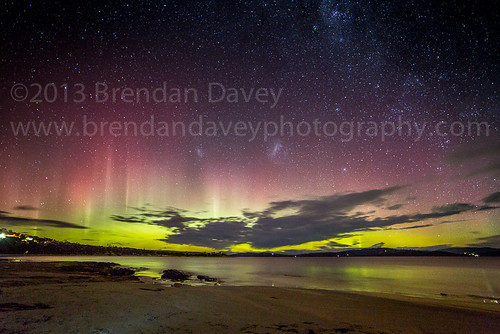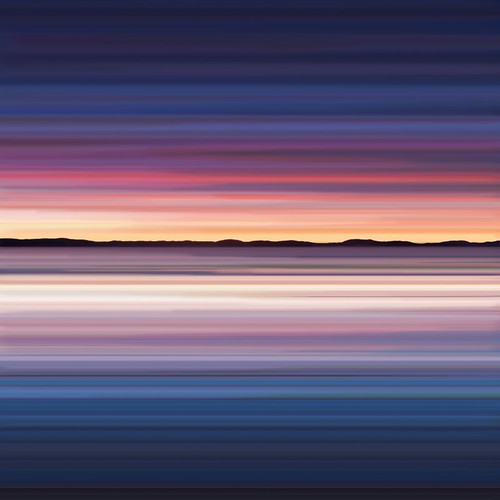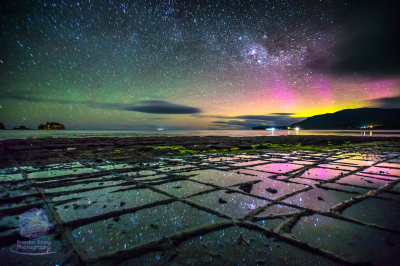 It’s taken me a while but last night the weather was favorable and I managed to finally get a reasonable Aurora over the ‘Pans’ at Eaglehawk neck. As an added bonus I also scored a little airglow as well, seen here as the green glow to the left of the picture 🙂
It’s taken me a while but last night the weather was favorable and I managed to finally get a reasonable Aurora over the ‘Pans’ at Eaglehawk neck. As an added bonus I also scored a little airglow as well, seen here as the green glow to the left of the picture 🙂
For these shots I used an ND Grad filter to darken the sky allowing more exposure in the foreground without overexposing the glow of the Aurora.
“The most well known example of a tessellated pavement is the Tessellated Pavement that is found at Lufra, Eaglehawk Neck on the Tasman Peninsula of Tasmania. This tessellated pavement consists of a marine platform on the shore of Pirates Bay, Tasmania. This example consists of two types of formations: a pan formation and a loaf formation.
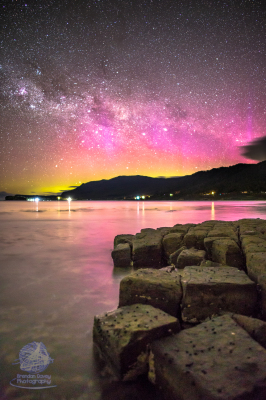 The pan formation is a series of concave depressions in the rock that typically forms beyond the edge of the seashore. This part of the pavement dries out more at low tide than the portion abutting the seashore, allowing salt crystals to develop further; the surface of the “pans” therefore erodes more quickly than the joints, resulting in increasing concavity.
The pan formation is a series of concave depressions in the rock that typically forms beyond the edge of the seashore. This part of the pavement dries out more at low tide than the portion abutting the seashore, allowing salt crystals to develop further; the surface of the “pans” therefore erodes more quickly than the joints, resulting in increasing concavity.
The loaf formations occur on the parts of the pavement closer to the seashore, which are immersed in water for longer periods of time. These parts of the pavement do not dry out so much, reducing the level of salt crystallization. Water, carrying abrasive sand, is typically channeled through the joints, causing them to erode faster than the rest of the pavement, leaving loaf-like structures protruding.”
-WikiPedia.
